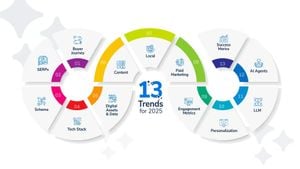The International Day of Women and Girls in Science was celebrated across Spain on February 11, 2025, with enthusiasm and vigor, highlighted by over 220 scientific activities organized by the Ministry of Science, Innovation, and Universities (MICIU). The day's purpose is to spotlight the significant roles women and girls play in scientific fields and to inspire future generations to pursue careers in science, technology, engineering, and mathematics (STEM).
At the forefront of the celebration, the Minister of Science, Innovation, and Universities, Diana Morant, emphasized, "The future of our country can only be written fairly if we count on all our talent." This statement encapsulates the essence of the day, which seeks to dismantle barriers and promote educational and professional pathways for young women.
Among the many events organized, the encounter titled “Day of Women and Girls in Science 2025: Inspiring STEAM Vocations from Antarctica” stood out. This unique event featured Morant engaging with Spanish scientists participating in the XXXVIII Antarctic Research Campaign through a telematic dialogue with students from three public schools: IES Lope de Vega from Madrid, IES Enric Valor from Picanya, Valencia, and CEIP Santa Cecilia from Espinosa de los Monteros, Burgos. Such interactions aim to provide visibility to female role models, sparking interest among young people about careers in various scientific fields.
The Council for Scientific Research (CSIC) has also stepped up its efforts, programming nearly 200 activities across the country. These initiatives, framed within the campaign "All of us do science," include talks, workshops, cinema forums, exhibitions, and educational encounters all aimed at recognizing and promoting the contributions of women scientists.
For example, during February, CSIC's social media channels spotlighted short videos featuring female researchers sharing childhood experiences influencing their scientific careers. These narratives serve as powerful motivation for the younger audience.
The Center for Energy, Environmental, and Technological Research (CIEMAT) contributed by hosting engaging events targeting middle and high school students, allowing them to connect with female scientists and learn about various projects. The meeting titled “Scientists Like You” featured CIEMAT researchers discussing their journeys and future aspirations. Similarly, the online workshop “Girls in Control” taught students about feedback mechanisms and control examples relevant to their daily lives, empowering them to assume leadership roles.
On the health front, the Carlos III Health Institute (ISCIII) organized educational activities aimed at primary and secondary school students to fuel their interest in health research and celebrate the involvement of women within this field.
Various other organizations and institutions participated, such as the Spanish Foundation for Science and Technology (FECYT), which hosted events at the National Museum of Science and Technology (MUNCYT). Special activities included conferences and guided tours, connecting the public with influential women scientists, such as Ada Lovelace and Hedy Lamarr, who have made significant contributions to their respective fields.
Reflecting on the historical significance of this day, it’s important to recognize its roots. The International Day of Women and Girls in Science was established by the United Nations General Assembly on December 22, 2015, to promote the full and equal access and participation of women and girls in science. Celebrations and calls to action are pragmatic responses to the persisting gender gap, particularly evident within the STEM fields.
Current statistics reveal alarming trends; though women constitute over half of university students, their representation dwindles significantly at higher academic and leadership levels. For example, women only represent about 6% of all Nobel Prize winners, showcasing the systemic barriers still at play.
Speaking on this issue, mathematician Clara Grima noted, "It is important to spotlight the work of women dedicated to STEM fields," emphasizing the necessity for more women to take leadership roles and inspire others.
Similarly, Margarita del Val, immunologist, reinforced the message of inclusion: "We need to include everyone because science benefits from diversity," underlining the need for collaborative efforts to create equitable opportunities within scientific environments.
Despite advances made over the past decade since the establishment of this day, experts agree there remains much work to be done. Women and girls continue to face considerable discrimination and are often relegated to subordinate roles within the scientific community. Efforts to raise awareness and encourage young women to pursue careers in science are more important now than ever.
The initiatives observed during the International Day of Women and Girls in Science serve as catalysts for change, inspiring young girls to conceive of science as not just accessible, but as their calling. The goal is clear: to encourage all individuals to contribute to breaking down societal norms and celebrate the diversity of talent within the scientific realms.
By conducting these events and fostering open dialogues, Spain is carving out pathways toward parity and equity, championing the spirit of inclusion needed to drive innovation and address the global challenges facing society today.



